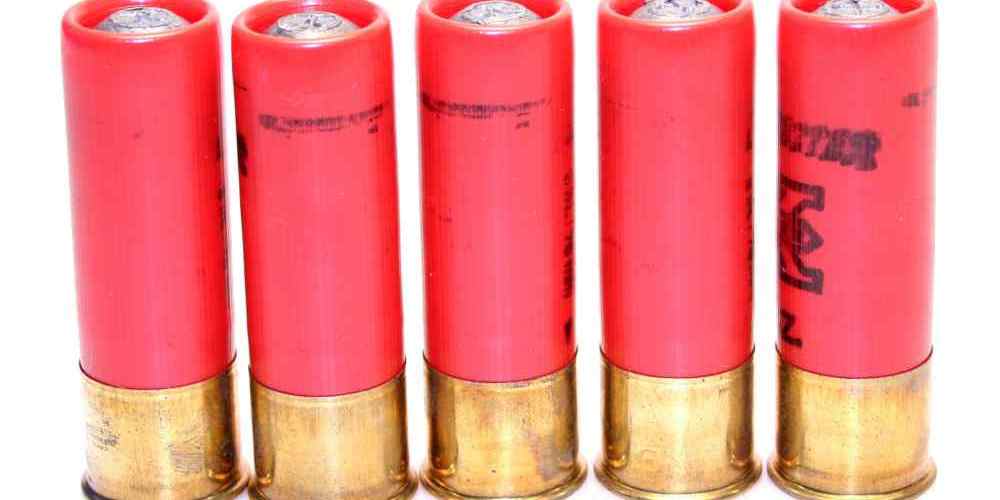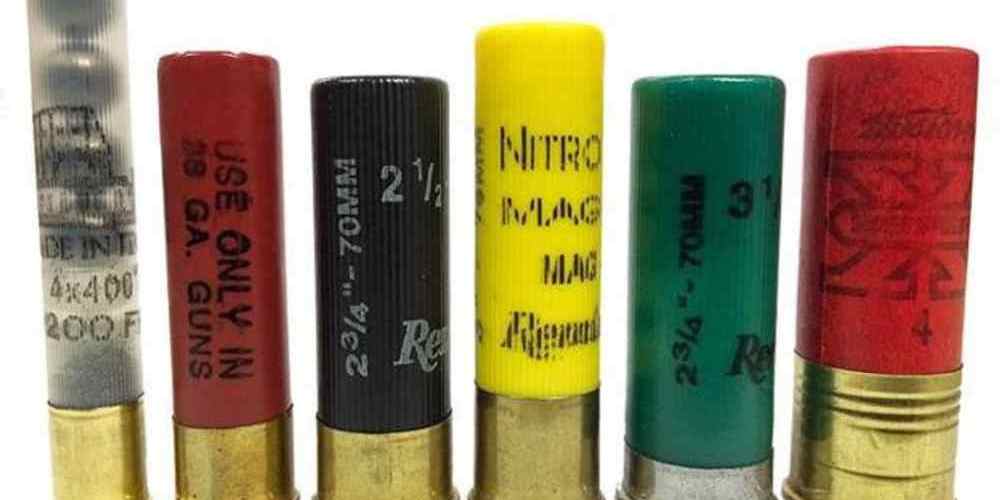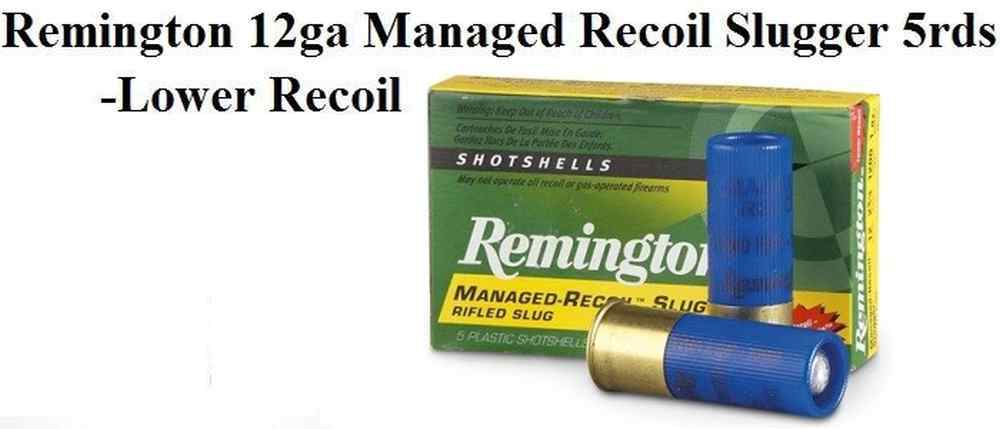Stacking the odds in your favor with the right ammo.
Selecting the Best Shotgun Ammo for Home Defense
When it comes to home defense, having the right tools and tactics can make all the difference in a potentially life-threatening situation. One of the most popular choices for home defense is the shotgun, known for its stopping power and versatility in close-quarters combat. However, simply owning a shotgun is not enough – selecting the right ammunition is crucial to ensure that you are prepared to defend yourself and your loved ones effectively.
When it comes to selecting the best shotgun ammo for home defense, there are a few key factors to consider. The first and most important factor is the type of ammunition. There are several different types of shotgun ammunition available, including birdshot, buckshot, and slugs. Each type of ammunition has its own unique characteristics and is best suited for specific situations.
Birdshot is typically used for hunting small game and birds, as it consists of small pellets that spread out over a wide area. While birdshot can be effective at close range, it is not recommended for home defense as it lacks the stopping power needed to neutralize a threat quickly and effectively.
Buckshot, on the other hand, is a popular choice for home defense as it consists of larger pellets that are designed to penetrate deeply and cause significant damage to an attacker. Buckshot is effective at close range and is capable of stopping an intruder in their tracks with just one shot. It is important to note that buckshot can over-penetrate walls and potentially harm innocent bystanders, so it is crucial to be aware of your surroundings when using this type of ammunition.
Slugs are another option for home defense, as they consist of a single solid projectile that is capable of delivering a devastating blow to an attacker. Slugs are highly accurate and have excellent penetration, making them a good choice for situations where precision is key. However, slugs can also over-penetrate walls and pose a risk to bystanders, so it is important to use them with caution.
In addition to the type of ammunition, it is also important to consider the size of the shot. Shotguns are available in various gauges, with 12 gauge being the most common for home defense. Smaller gauges, such as 20 gauge, can also be effective but may not have the same stopping power as a 12 gauge shotgun. It is important to choose a shotgun that you are comfortable with and can handle effectively in a high-stress situation.
When selecting shotgun ammunition for home defense, it is important to practice with your chosen ammo regularly to ensure that you are comfortable and proficient with it. Familiarize yourself with the recoil and handling characteristics of your chosen ammunition, and practice shooting at various distances to improve your accuracy and effectiveness.
In conclusion, selecting the best shotgun ammo for home defense is a crucial step in ensuring your safety and the safety of your loved ones. By choosing the right type of ammunition and practicing regularly, you can stack the odds in your favor and be prepared to defend yourself effectively in a potentially dangerous situation. Remember, when it comes to home defense, it is better to be over-prepared than under-prepared.

Understanding the Importance of Shot Placement in Defensive Situations
When it comes to defensive shotgun tactics, shot placement is crucial. In a high-stress situation where split-second decisions can mean the difference between life and death, knowing where to aim and how to stack the odds in your favor is essential. One of the most important factors in determining shot placement is the type of ammunition you choose to load into your shotgun.
Shotguns are versatile firearms that can be loaded with a variety of different types of ammunition, each with its own unique characteristics and intended use. When it comes to defensive situations, choosing the right ammo can make all the difference. The most common types of shotgun ammunition used for self-defense are buckshot and slugs.
Buckshot is a type of shotgun ammunition that contains multiple pellets, typically ranging in size from 00 buck (about .33 inches in diameter) to #4 buck (about .24 inches in diameter). When fired, these pellets spread out in a pattern, increasing the likelihood of hitting the target. Buckshot is effective at close range and is often used in home defense situations where over-penetration is a concern.
Slugs, on the other hand, are single projectiles that are larger and heavier than buckshot pellets. Slugs are designed for accuracy and penetration, making them ideal for longer-range shots or situations where a single, well-placed shot is necessary. While slugs offer greater accuracy and stopping power than buckshot, they also have a higher risk of over-penetration, which can pose a danger to bystanders.
When it comes to shot placement in defensive situations, the goal is to incapacitate the threat as quickly and effectively as possible. This means aiming for vital areas of the body that are most likely to stop an attacker in their tracks. The most common target areas for defensive shotgun tactics are the chest and head.
The chest is a large target area that contains vital organs such as the heart and lungs. A well-placed shot to the chest can cause significant damage and quickly incapacitate an attacker. When using buckshot, aiming for the center of mass is recommended to increase the likelihood of hitting the target.
The head is another effective target area for defensive shotgun tactics. A shot to the head can instantly incapacitate an attacker by disrupting the brain’s function. However, the head is a smaller target area and requires greater accuracy to hit effectively. When using slugs, aiming for the head can be a more reliable way to stop a threat quickly.
In addition to shot placement, it’s important to consider the distance between you and the threat when using defensive shotgun tactics. Shotguns are effective at close range, typically within 25 yards or less. Beyond this distance, the spread of buckshot becomes less effective, and accuracy with slugs becomes more challenging.
In conclusion, shot placement is a critical factor in defensive shotgun tactics. By choosing the right ammunition and aiming for vital areas of the body, you can stack the odds in your favor and increase your chances of stopping a threat quickly and effectively. Whether you prefer buckshot or slugs, understanding the importance of shot placement in defensive situations is key to staying safe and protecting yourself and your loved ones.
Utilizing Slugs for Increased Stopping Power
When it comes to defensive shotgun tactics, one of the most important factors to consider is the type of ammunition you are using. While buckshot is a popular choice for its spread and stopping power, utilizing slugs can provide even greater stopping power and accuracy in certain situations.
Slugs are essentially large, single projectiles that are fired from a shotgun. They are typically made of lead or other dense materials and are designed to deliver a devastating impact on a target. Unlike buckshot, which disperses multiple pellets in a wide pattern, slugs travel in a straight line, making them ideal for longer range shots and situations where precision is key.
One of the main advantages of using slugs for defensive purposes is their increased stopping power. A single slug can cause significant damage to a target, making it more likely to incapacitate an attacker with a single shot. This can be crucial in a self-defense situation where every second counts and accuracy is paramount.
In addition to their stopping power, slugs also offer improved accuracy over buckshot. Because they travel in a straight line, slugs are easier to aim and can be more effective at longer ranges. This can be especially important in situations where you need to engage a target from a distance or where there are obstacles that could deflect buckshot pellets.
When using slugs for defensive purposes, it is important to choose the right type of slug for your shotgun. There are several different types of slugs available, including rifled slugs, sabot slugs, and foster slugs. Each type has its own unique characteristics and is designed for specific purposes.
Rifled slugs are the most common type of slug and are designed to be fired through smoothbore shotguns. They have rifling on the outside of the slug, which helps stabilize it in flight and improve accuracy. Rifled slugs are a good all-around choice for defensive purposes and can be effective at a variety of ranges.
Sabot slugs are designed for use in rifled shotgun barrels and are typically made of a lighter material, such as copper or plastic. They are designed to be fired at higher velocities and offer improved accuracy and range over rifled slugs. Sabot slugs are a good choice for situations where you need to engage targets at longer distances.
Foster slugs are another common type of slug and are designed for use in smoothbore shotguns. They have a hollow base that expands upon firing, creating a stable flight path. Foster slugs are a good choice for close to medium range engagements and offer good stopping power.
Regardless of the type of slug you choose, it is important to practice with your chosen ammunition to ensure that you are comfortable and proficient with it. Defensive shotgun tactics require quick thinking and precise shooting, so it is important to be familiar with your equipment and how it performs in different situations.
In conclusion, utilizing slugs for defensive purposes can provide increased stopping power and accuracy over buckshot. By choosing the right type of slug for your shotgun and practicing with it regularly, you can stack the odds in your favor in a self-defense situation. Remember, when it comes to defensive shotgun tactics, the right ammunition can make all the difference.
Incorporating Buckshot for Close-Range Encounters
When it comes to defensive shotgun tactics, one of the most important factors to consider is the type of ammunition you are using. While birdshot and slugs have their own advantages, buckshot is often the preferred choice for close-range encounters. In this article, we will explore the benefits of incorporating buckshot into your defensive shotgun strategy and how it can help stack the odds in your favor.
Buckshot is essentially a cluster of large pellets that are designed to spread out upon firing, increasing the chances of hitting your target. This makes it particularly effective in close-quarters situations where accuracy may be compromised. The most common type of buckshot is 00 buck, which consists of nine pellets that are approximately .33 inches in diameter. This size and quantity of pellets make it a formidable choice for stopping power at close range.
One of the main advantages of using buckshot for defensive purposes is its ability to create a wider spread pattern, increasing the likelihood of hitting your target even if your aim is slightly off. This can be especially beneficial in high-stress situations where precision may be difficult to achieve. Additionally, the sheer force of multiple pellets hitting a target simultaneously can cause significant damage, incapacitating an attacker quickly and effectively.
Another benefit of using buckshot is its versatility in various defensive scenarios. Whether you are facing a single intruder or multiple threats, buckshot can provide the stopping power needed to neutralize the danger. Its ability to penetrate barriers such as doors and walls also makes it a valuable asset in home defense situations where collateral damage must be minimized.
When using buckshot in a defensive shotgun, it is important to consider the range at which you are likely to encounter a threat. While buckshot is highly effective at close range, its effectiveness diminishes as the distance increases. It is recommended to practice with your shotgun to determine the optimal range for using buckshot effectively. This will help you make informed decisions in high-pressure situations and increase your chances of success.
Incorporating buckshot into your defensive shotgun strategy requires careful consideration of your surroundings and potential threats. It is essential to be aware of the potential risks of overpenetration and take steps to minimize the chances of injuring innocent bystanders. Using buckshot responsibly means understanding its capabilities and limitations and using it judiciously to protect yourself and others.
In conclusion, buckshot is a valuable tool for stacking the odds in your favor in close-range defensive situations. Its wide spread pattern and stopping power make it an effective choice for neutralizing threats quickly and decisively. By incorporating buckshot into your defensive shotgun tactics and practicing with it regularly, you can increase your chances of success in high-stress situations. Remember to use buckshot responsibly and be mindful of the potential risks involved to ensure the safety of yourself and others.
Exploring the Benefits of Birdshot for Non-Lethal Defense Options
When it comes to home defense, having the right tools and tactics can make all the difference. One often-overlooked aspect of defensive shotgun tactics is the choice of ammunition. While buckshot and slugs are commonly recommended for their stopping power, birdshot can also be a valuable option for non-lethal defense.
Birdshot is a type of shotgun shell that contains small pellets, typically made of lead or steel. These pellets are much smaller than those found in buckshot or slugs, making birdshot less likely to penetrate walls and cause collateral damage. This can be especially important in a home defense situation, where the safety of loved ones and bystanders is paramount.
One of the key benefits of using birdshot for non-lethal defense is its ability to incapacitate an intruder without causing permanent harm. When fired at close range, birdshot can create a painful and debilitating wound, effectively stopping an attacker in their tracks. This can give you the time needed to escape to safety or call for help.
Another advantage of birdshot is its versatility. While buckshot and slugs are designed for maximum penetration, birdshot is better suited for situations where overpenetration is a concern. In a home defense scenario, the last thing you want is for a stray pellet to pass through walls and endanger innocent bystanders. By using birdshot, you can stack the odds in your favor and minimize the risk of unintended consequences.
It’s important to note that while birdshot is effective for non-lethal defense, it may not be as reliable as buckshot or slugs for stopping a determined attacker. The smaller pellets of birdshot are less likely to incapacitate an assailant instantly, meaning that multiple shots may be necessary to neutralize the threat. This is why it’s crucial to practice proper shot placement and follow-up shots when using birdshot for self-defense.
In addition to its effectiveness in non-lethal defense, birdshot is also more affordable and readily available than other types of shotgun ammunition. This makes it a practical choice for those on a budget or those who may have difficulty finding specialized ammunition like buckshot or slugs. By stocking up on birdshot, you can ensure that you have an effective means of defense without breaking the bank.
When it comes to defensive shotgun tactics, choosing the right ammunition can make all the difference. While buckshot and slugs are popular choices for their stopping power, birdshot offers a valuable alternative for non-lethal defense. With its ability to incapacitate an attacker without causing permanent harm, birdshot can give you the edge you need to protect yourself and your loved ones in a home defense situation. By stacking the odds with the right ammo, you can increase your chances of coming out on top in a dangerous encounter.





